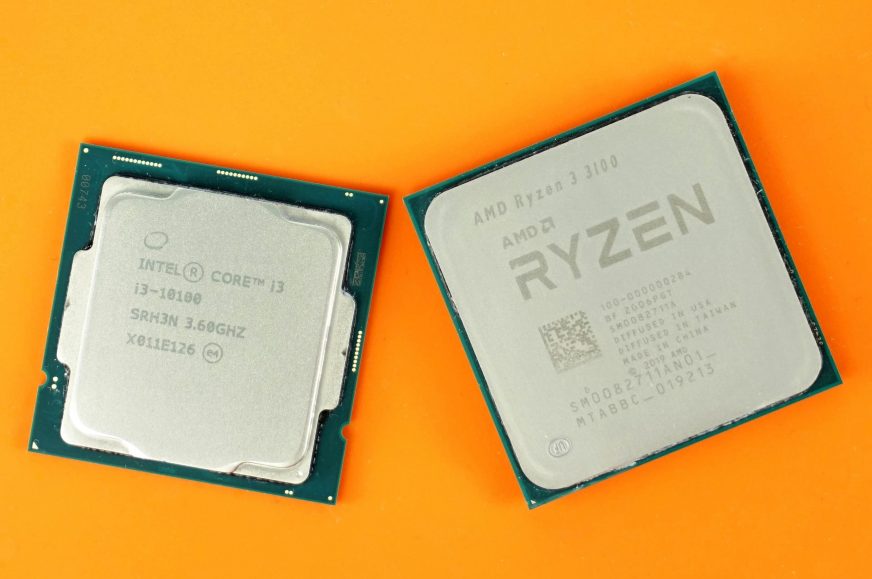Rendering and Geekbench
A year has passed since the introduction of AMD’s Ryzen third generation, but the product line was still not complete. We were waiting for the lowest line to be refreshed with the designation Ryzen 3. In the meantime, the 10th generation of Intel Core processors has been released, including new i3 SKUs. We got novelties from both manufacturers, namely Ryzen 3 3100 and Core i3-10100. Which one is better?
Rendering
Cinebench R15 is one of the most popular benchmarks ever. Shows raw CPU performance on one or more threads. Gone are the days when Intel was the king of single-core. And with the arrival of Zen 2 at 7 nm, AMD processors have gained significant improvements in IPC, also compared to Intel’s 10th generation. 3100 beats 10100 in single-core by 3% and in multi-core by 14%.
The newer version of Cinebench R20 brings an even bigger, 7% difference in single-core. However, in multi-core the difference narrowed a bit to 9%.
In a practical test of POV-Ray render, Ryzen 3 is 12% or 15 seconds faster.
Blender shows a 3% difference in favor of Ryzen which translates to 14 seconds.
Geekbench
Geekbench 3 has similar results as in previous tests and thus 8 and 14% in favor of Ryzen.
Geekbench 4 doesn’t like AMD processors very much which I’ve been noticing for a long time. This was well seen in the tests of Renoir laptops. In this test, the Core i3 wins by 2% in single-core, but again lags in multi-core by 5%.
The latest Geekbench 5 shows only a 1% difference in single-core and 8% in multi-core in favor of AMD.
Raw performance of the R3 3100 in this area is undoubtedly better than that offered by the Core i3-10100. This is interesting mainly because the base clock speeds are the same at 3.6 GHz, but Intel has a higher boost of 4.3 vs 3.9 GHz. Nevertheless, it lags behind AMD.
- Contents
- Intro
- Rendering and Geekbench
- Gaming, graphics tests and PC/3DMark
- Encryption, encoding and memory tests
- Heating and power draw
- Rating












nice post and AMD Ryzen 3 vs Intel i3 – Detailed Comparison
full details click here http://www.betateck.com/amd-ryzen-3-vs-intel-i3-detailed-comparison/